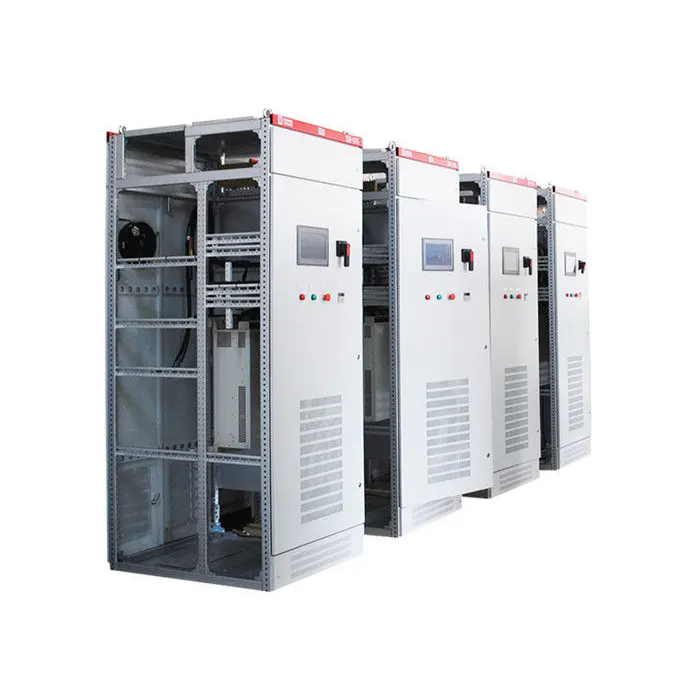Low Voltage Switchgear: Essential for Safe and Efficient Electrical Systems
2025-04-17
In the world of electrical systems, safety and reliability are paramount. Whether it’s in industrial, commercial, or residential applications, proper electrical distribution and protection are crucial to prevent accidents and ensure smooth operation. One of the key components in any electrical system that guarantees both protection and control is low voltage switchgear.
What is Low Voltage Switchgear?
Low voltage switchgear is a collection of electrical devices designed to control, protect, and isolate electrical equipment in low voltage electrical circuits (typically up to 1,000 V AC or 1,500 V DC). It serves as the primary interface between the electrical supply and the systems or machinery that require power, playing a vital role in both operation and safety.
Switchgear can include a variety of devices such as circuit breakers, switches, fuses, and isolators, all of which are designed to regulate the flow of electricity and protect against overloads, short circuits, or other faults. These devices are housed in metal enclosures to prevent accidental contact with live parts and to protect against fire or electrical shock.
Key Functions of Low Voltage Switchgear
Low voltage switchgear performs several important functions within an electrical system. These include:
1. Protection: One of the main roles of switchgear is to protect electrical circuits and equipment from faults such as overloads, short circuits, and ground faults. Circuit breakers within the switchgear can automatically disconnect the affected circuit when an abnormal condition is detected, preventing further damage and minimizing risks.
2. Control: Switchgear allows operators to control the distribution of electrical power. By using devices like switches and circuit breakers, you can isolate certain parts of the electrical system for maintenance, repair, or troubleshooting without shutting down the entire system.
3. Isolation: In case of an emergency or planned maintenance, switchgear provides the ability to isolate specific sections of the electrical network, ensuring that work can be performed safely without affecting the rest of the system. This isolation helps prevent accidents and electrical hazards.
4. Monitoring and Fault Detection: Modern low voltage switchgear often includes monitoring systems that allow operators to detect faults, measure current flow, and assess the overall health of the electrical system. This feature enhances system reliability and allows for quicker identification of potential problems.
Components of Low Voltage Switchgear
Low voltage switchgear typically includes the following components:
1. Circuit Breakers: These devices automatically interrupt the flow of electricity in the event of an overload or short circuit. They are designed to protect circuits and electrical equipment from damage by quickly disconnecting the current in the event of a fault.
2. Fuses: Fuses are similar to circuit breakers, but they are a one-time protection device. When an overload or fault occurs, the fuse melts and disconnects the circuit to prevent further damage.
3. Isolators and Disconnect Switches: These are used to isolate a part of the electrical system for maintenance or repair. Unlike circuit breakers, isolators and disconnect switches are manually operated and are typically used when the system is not live.
4. Busbars: Busbars are conductive bars that provide a connection point for multiple electrical circuits. They are essential for distributing power efficiently across different parts of the electrical system.
5. Protective Relays: These are devices that monitor electrical parameters (such as current, voltage, and frequency) and activate the circuit breaker or fuse if the monitored parameters go beyond safe limits.
6. Control Panels: Low voltage switchgear often includes control panels that house the switches, meters, and monitoring devices used to manage and monitor the electrical system. Control panels allow operators to manage and troubleshoot the system efficiently.
Benefits of Low Voltage Switchgear
1. Enhanced Safety: Low voltage switchgear helps protect people, equipment, and property by preventing electrical hazards like short circuits and overloads. By automatically disconnecting faulty circuits, it minimizes the risk of electrical fires, electric shocks, and other dangerous incidents.
2. Reliability and Continuity: By providing a reliable means of control and protection, low voltage switchgear ensures the smooth operation of electrical systems. This reduces downtime, improves the efficiency of the system, and helps prevent disruptions to business operations.
3. Cost Savings: While investing in high-quality switchgear can be costly, it ultimately saves money by preventing damage to expensive electrical equipment, reducing maintenance costs, and avoiding costly downtime. It can also improve energy efficiency, lowering utility bills.
4. Ease of Maintenance: With the ability to isolate parts of the system, low voltage switchgear allows for safe and efficient maintenance. The isolators and disconnect switches allow for easy shutdowns, while modern monitoring systems can help operators identify issues before they cause major problems.
5. Adaptability: Modern low voltage switchgear can be adapted to suit a wide range of applications and electrical systems. It is available in various configurations, allowing it to be tailored to meet the needs of different industries, from residential buildings to large industrial facilities.
Applications of Low Voltage Switchgear
Low voltage switchgear is used in a variety of industries and applications, including:
- Residential and Commercial Buildings: In these environments, low voltage switchgear ensures the safe distribution of electricity to all parts of the building. It protects the electrical circuits from faults and allows for maintenance without causing disruption to the building’s power supply.
- Industrial Facilities: Large factories and industrial plants rely on low voltage switchgear to protect critical machinery, manage power distribution, and ensure the overall reliability of their electrical systems.
- Data Centers: Data centers require highly reliable and efficient power distribution systems to keep their servers running smoothly. Low voltage switchgear ensures that these systems remain safe and operational, preventing downtime and damage to equipment.
- Renewable Energy Systems: In solar, wind, and other renewable energy installations, low voltage switchgear helps manage the power flow from the generation source to the grid, ensuring that the system operates safely and efficiently.
Conclusion
Low voltage switchgear is an essential part of any electrical system, offering crucial protection, control, and monitoring functions that keep electrical networks running safely and efficiently. Whether for industrial use, commercial buildings, or residential applications, low voltage switchgear plays a pivotal role in ensuring the integrity and reliability of power distribution systems.
By investing in high-quality low voltage switchgear, you not only safeguard your equipment but also improve operational efficiency, reduce downtime, and prevent costly accidents. As electrical systems become more complex and demand increases, low voltage switchgear will continue to be a cornerstone of electrical safety and performance.



